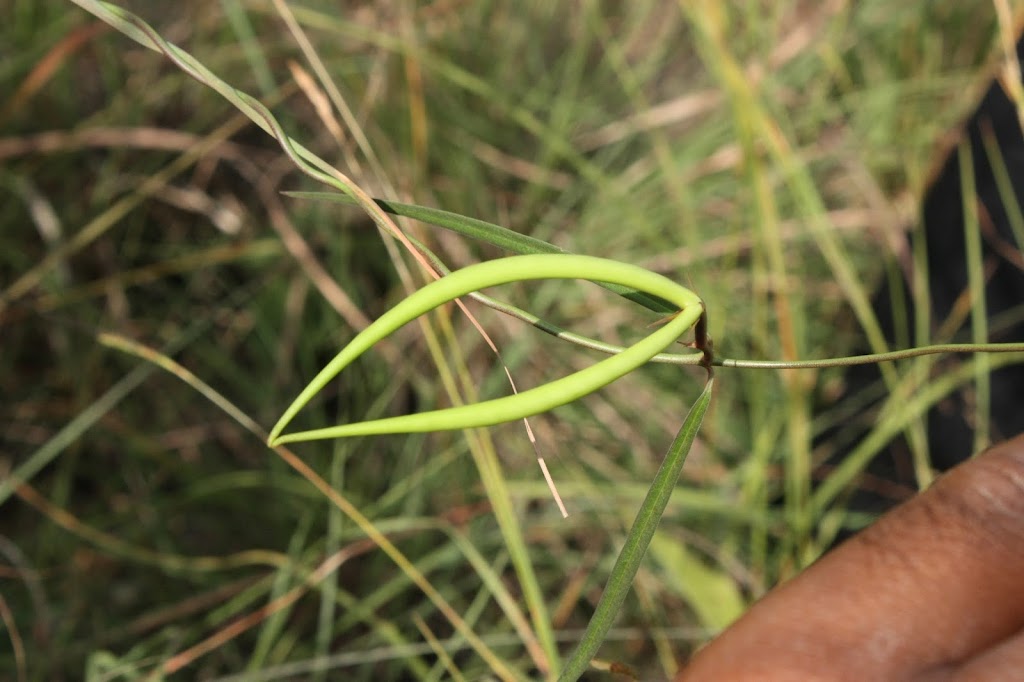 |
| Brachystelama nigidianum (habit) |
Botanists from Centre for Ecological Sciences, Indian Institute of Science, Bangaluru and Department of Botany, Sri Krishanadevaraya University, Andhra Pradesh reported a new species Brachystelma nigidianum from the Nigidi forest near Kadiri, Anantapuramu district of Andhra Pradesh State of India. The reported species is similar to B. beddomei Hook. f. and B. volubile Hook. f., in its climbing habit and leaf shape, but can be distinguished from these two species by the length of its calyx (9–10 mm long), distinct urceolate-shaped corolla tube, reddish maroon corona and apically connate follicles.
Authors have named the species after the type locality Nigidi forest, which is a part of the Eastern Ghats, Anantapuramu district of Andhra Pradesh state, India. The reported species, Brachystelma nigidianum is known from the type locality with only 10 individuals. The species is therefore, assessed as Data Deficient (DD) according to IUCN.
This new species was collected at first in November 2011 and published in Rheedea Journal (2012) entitled “The rediscovery of Brachystelma volubile (Apocynaceae – Asclepiadoideae)”. Later in 2014 another climbing Brachystelmaspecies was collected from Tirumala hills and identified based on holotype and protologue as B. volubile which is actual species discovered by Hook.f. (Hooker, Joseph Dalton) in his flora of British India, informed Dr. Raja Kullayi Swamy (first author) to Indian Botanists.
 |
| Brachystelama nigidianum (flower side view) |
Dr. Swamy, further informed that they realized that what they had published earlier in Rheadea was something new from existing climbing species Brachystelma. Since then they looked back and did molecular phylogeny work for both with the help of Dr. S. Siddharthan who was working on phylogenetics for tribe Ceropegieae from India. The result showed Brachystelma volubile (from Tirumala) and B. nigidianum was placed with Ceropegia pullaiahii which was published in Nordic Journal of Botany by Raja Kullayiswamy et al. (2013).
 |
| Brachystelama nigidianum (Corona) |
Based on molecular evidences and morphological characters we proceed to new species publication that is B. nigidianum. The present species is interestingly sharing both Brachystem and Ceropegia characters and has small corolla tube, connate to free corolla lobes, copular hairy corona and erect pollinia, said Dr. Swamy.
The research report of the same has been published in the current issue (volume 71, issue 50) of Kew Bulletin one of the renowned journal in the field of taxonomy. Exploration and report of the new species was conducted under the supervision of Dr. T. Pullaiah, Senior Plant Taxonomist.
The study was funded by the Board of Research in Nuclear Sciences, Government of India.
Reference
Kullayiswamy, K. R., Sandhyarani, S. & Pullaiah, T. (2016). Brachystelma nigidianum (Apocynaceae: Asclepiadoideae), a new species from India. Kew Bull 71: 50. [71 (4): 1-7] doi:10.1007/s12225-016-9668-zonline: 19 Nov. 2016.
Contact us through indianbotanists@gmail.com to report your published article as news item on www.indianbotanists.com





Leave a Reply